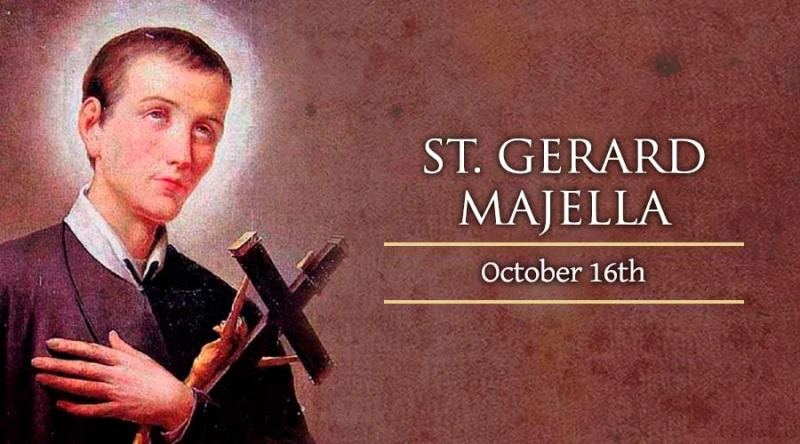St. Pascal Baylon

St. Pascal Baylon
Feast date: May 17
Pascal was born at Torre-Hermosa, in the Kingdom of Aragon, on May 24, 1540. He was born on the Feast of Pentecost, which in Spain is called “the Pasch of the Holy Ghost”, which is why he received the name Pascal. He died at Villa Reale, May 15, 1592, on Whitsunday.
His parents, Martin Baylon and Elizabeth Jubera, were virtuous peasants. The child began very early to display signs of that surpassing devotion towards the Holy Eucharist, which forms the salient feature of his character.
From his seventh to his twenty-fourth year, he led the life of a shepherd, and during the whole of that period exercised a salutary influence upon his companions. He was then received as a lay brother amongst the Franciscan friars of the Alcantarine Reform. In the cloister, Paschal’s life of contemplation and self-sacrifice fulfilled the promise of his early years.
His charity to the poor and afflicted, and his unfailing courtesy were remarkable. On one occasion, in the course of a journey through France, he triumphantly defended the dogma of the Real Presence against the blasphemies of a Calvinist preacher, and in consequence, narrowly escaped death at the hands of a Huguenot mob. Although poorly educated, his counsel was sought for by people of every station in life, and he was on terms of closest friendship with personages of eminent sanctity. Pascal was beatified in 1618, and canonized in 1690.
His cultus has flourished particularly in his native land and in Southern Italy, and it was widely diffused in Southern and Central America, through the Spanish Conquests.
In his Apostolic letter, Providentissimus Deus, Leo XIII declared St. Pascal the especial heavenly protector of all Eucharistic Congresses and Associations. His feast is kept on 17 May. The saint is usually depicted in adoration before a vision of the Host.
St. Raymond Nonnatus
Raymond became a priest due to his quiet persistence in prayer and study. He was born to a noble Spanish family in 1204. His mother died during child birth and his father had high expectations for Raymond to serve in the country’s Royal Court.  However, the young Raymond felt drawn to religious life. In an attempt to dissuade him, his father ordered him to manage one of the family farms. However, Raymond spent his time with the workers, studying, and praying. His father finally gave up and allowed Raymond to enter the Mercederians. Fr. Raymond spent his entire estate ransoming slaves. He even offered himself as a hostage to free another. He was sentenced to death but was spared because his ransom would bring in a large amount of money. During his imprisonment, he succeeded at converting some of his guards. To keep him from continuing his preaching, his captors bored a hole through his lips with a hot iron, and attached a padlock. He was eventually ransomed, and he returned to Barcelona in 1239. That year, he was named a cardinal by Pope Gregory IX.  The following year, in 1240, he was summoned to Rome, but barely made it out of Barcelona before he died at the age of 36. St. Raymond is the patron saint of pregnant women, childbirth, and newborn infants.
St. Gianna Beretta Molla

St. Gianna Beretta Molla
Feast date: Apr 28
Gianna Beretta Molla was born on October 4, 1922 in Magenta, Italy. She was the tenth of 13 children in her family. She grew up in a devout Catholic home and quickly learned the value of prayer. As a young adult, she joined the Society of Saint Vincent de Paul.
Gianna began to study medicine during World War II. In 1950 she opened her own medical office in Mesero, which was near her hometown. A couple years later she began to specialize in pediatrics and was drawn towards mothers, babies, the elderly, and the poor.
In 1954 Gianna met Pietro Molla, an engineer who worked in her office. In September of 1955 the two became husband and wife. Between 1956 and 1959 the couple had three children, Pierluigi, Maria Zita and Laura.
Gianna embraced the vocation of being a wife and mother with all her being and completely dedicated herself to “forming a truly Christian family.”
In 1961, Gianna became pregnant with their fourth child. It was during this pregnancy that doctors discovered that Gianna had developed a uterine tumor.
The doctors gave her three choices: an abortion, which would save her life and allow her to have more children but take the life of her baby; a complete hysterectomy, which would save her life but prevent her from having more children and take her baby’s life; or removal of the fibroma only, which posed the risk of future complications but could save the life of her baby.
Gianna chose to have only the tumor removed. She was willing to lose her life for the sake of her baby’s. She knew that she may not make it through delivery, but she made it very clear that if a choice needed to be made between saving her own life or the child’s, the child needed to be saved.
Throughout her pregnancy, Gianna found strength in the Lord and asked him to take any pain away from the child.
On April 21, 1962 Gianna Emmanuel Molla was successfully delivered by Cesarean section. However, after complications arose with the tumor, Gianna passed away 7 days later on April 28.
Gianna was beatified by Saint Pope John Paul II on April 24, 1994 and canonized as a saint on May 16, 2004. Her husband and children attended her canonization.
During her canonization, Saint Pope John Paul II said, “Shortly before her wedding, in a letter to her future husband, she wrote: “Love is the most beautiful sentiment that the Lord has placed in the spirit of men.”
“Following the example of Christ, who ‘having loved his own … he loved them to the end’ (John 13:1) this holy mother of a family was heroically faithful to the commitment she took on the day of her marriage. The supreme sacrifice that sealed her life testifies that only the one who has the courage to give himself totally to God and to neighbor finds fulfillment,” he added.
The pope described her as, “a simple, but more than ever, significant messenger of divine love.”
St. Gianna Beretta Molla is the patron saint of mothers, physicians, and unborn children.
St. Gerard Majella

St. Gerard Majella
Feast date: Oct 16
On October 16, we celebrate the feast of St. Gerard Majella. St. Gerard was born the son of a tailor on April 6, 1726. He grew up about fifty miles south of Naples in Muro Lucano, Italy in a large, poor family. When St. Gerard was only 12, his father Dominic Majella entered eternal rest. Upon the death of his father, his mother, beholden to poverty, sent St. Gerard away to live with his uncle. St. Gerard thereafter became an apprentice to a tailor. This tailor treated him well; however, the foreman treated him poorly. After serving as a sewing apprentice for a couple years, he instead became a servant in the household of the bishop of Lacedonia, who was a cantankerous master. Upon the death of the bishop in 1745, he returned home. At the age of 21, he became a journeyman. He split his earnings for his mother and the poor, and made offerings for the holy souls in purgatory. Afterwards, he opened his own tailor shop.
At a young age, St. Gerard tried to join the local Capuchins, but he was turned down twice due to his youth and poor health. He also tried to become a hermit, but that too was not God’s will for him. He then entered the Congregation of the Most Holy Redeemer in 1749 and professed of perpetual vows under the Redemptorist’s founder, Saint Alphonsus Liguori, in 1751.
He served as tailor and infirmarian and became known for his extraordinary supernatural gifts of bilocation, prophecy, ecstasies, visions, and infused knowledge. Though not ordained to the holy order of priest, his spiritual direction and advice were sought by many among the clergy and communities of nuns, to which he also gave conferences. He was most successful in converting sinners, and was widely known for his sanctity and charity.
In 1754, he was calumniated and accused of lechery by a woman named Neria Caggiano. Caggiano later admitted her charge was a lie. Even before she admitted to her falsehood, St. Gerard did not deny her charges. As these charges were still up in the air, his superiors became suspicious, so they put him under surveillance and excluded him from communion for months until the girl admitted that she had lied. When asked by Saint Alphonsus why he had kept silent in such circumstances, St. Gerard replied that he thought such patience was required in the face of unjust accusations. As St. Gerard bore this calumny with such humility and patience, Saint Alphonsus said, “Brother Gerard is a saint.”
St. Gerard was sent to Naples soon after, but when the house was inundated by visitors wanting to see him, he was sent to Caposele a few months later. He served as the porter there and ministered to the poor of the town. St. Gerard spent the last few months of his life raising funds for new buildings at Caposele.
Just prior to his death, St. Gerard visited his friends, the Pirofalo family. One of the daughters ran and called after him as he left the home, as he dropped his handkerchief. Speaking through the gift of prophecy, he replied, “Keep it. It will be useful to you someday.” Years down the road, when this young women was in danger of childbirth, she recalled these words of St. Gerard, and requested the handkerchief. The handkerchief was applied to her, thus a miracle: her pain immediately ceased and she gave birth to a healthy child.
St. Gerard died of tuberculosis on October 16, 1755 at the age of 29 in Caposele. He was beatified by Pope Leo XIII on January 29, 1893, and was canonized on December 11, 1904 by Pope Saint Pius X. He is the patron saint of mothers, motherhood, expectant mothers, childbirth, children, pregnant women, unborn children, the pro-life movement, the falsely accused, good confessions, and lay brothers.
